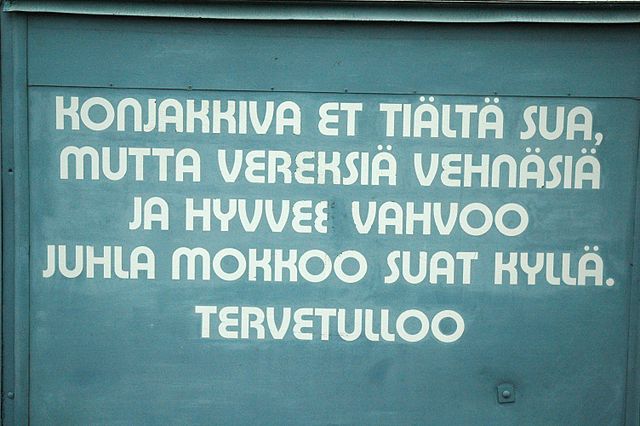Finland's language strife
Finland's language strife was a major conflict in mid-19th century Finland. Both the Swedish and Finnish languages were commonly used in Finland at the time, associated with descendants of Swedish colonisation and leading to class tensions among the speakers of the different languages. It became acute in the mid-19th century. The competition was considered to have officially ended when Finnish gained official language status in 1863 and became equal to the Swedish language.
A set of graves in Tampere, showing the Swedish surname 'Kyander' as well as the Fennicized 'Kiianmies'
Demonstration for the position of Finnish language in the University at the statue of J. V. Snellman in Helsinki in 1935.
Finnish is a Uralic language of the Finnic branch, spoken by the majority of the population in Finland and by ethnic Finns outside of Finland. Finnish is one of the two official languages of Finland. In Sweden, both Finnish and Meänkieli are official minority languages. The Kven language, which like Meänkieli is mutually intelligible with Finnish, is spoken in the Norwegian counties Troms and Finnmark by a minority group of Finnish descent.
Mikael Agricola, a 19th-century drawing by Albert Edelfelt
Elias Lönnrot as depicted in a 19th-century caricature – Lönnrot made several journeys to Karelia and Eastern Finland to collect folklore, from which he compiled the Kalevala.
The Turku dialect is famous for its seemingly inverted questions. For example, "Ei me mittä kaffelle men?" looks like it means "So we don't go for a coffee?" but actually means "Shall we go for a coffee?"
A sign in Savonian dialect: "You don't get cognac here, but fresh wheat buns and good strong Juhla Mokka-brand coffee you will have. Welcome."






